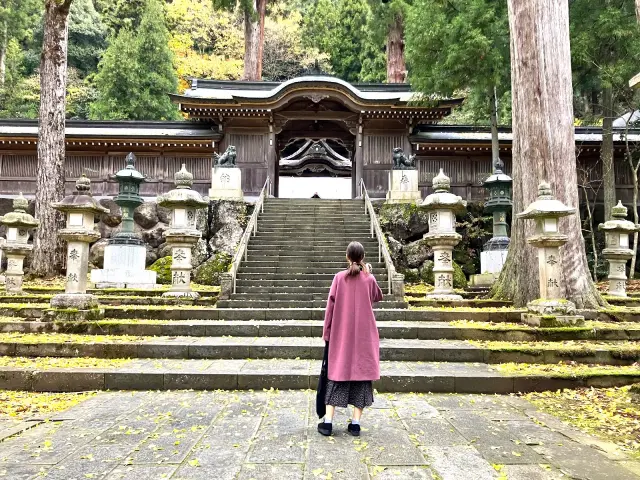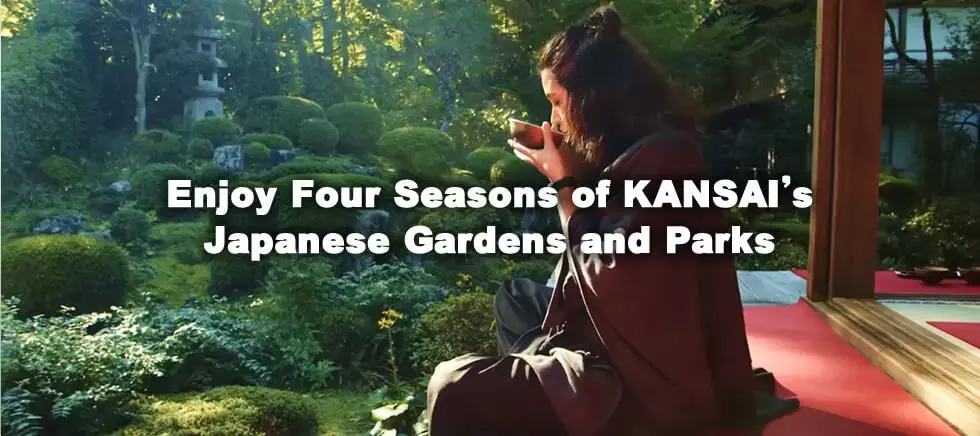
Enjoy Four Seasons of KANSAI’s Japanese Gardens and Parks
Last update
Kansai’s Parks and Gardens
Many visitors to Japan are intrigued by an often-used, almost to the point of being a cliched phrase stating that “Japan has four seasons”. The phrase appears in many tourist books, pamphlets and even a number of web sites, and is written in such a way as to suggest that this is a phenomenon unique to Japan.
What they mean to say is that Japan’s four seasons are most noticeable and distinct. It is almost as though the seasons change on cue. Winter will be replaced almost overnight by sunshine, clear skies and cherry blossom. Exactly three months later, summer will suddenly make its presence felt. Just as you’ve been nicely roasted, like clockwork, the trees turn red, gold and orange, and before you can tire of the natural colors, leaves drop, winter arrives, and you’re provided with a more stark, yet vastly beautiful, unique scenery.
One of the best regions to experience the best of Japan’s four seasons is without doubt, the Kansai region, and Kansai’s parks and gardens are some of the finest, most easily accessible and enjoyable parks and gardens in the country. Over 100 traditional gardens within the Kansai region have been registered as important cultural properties, or as national scenic spots. Some of the Must-See Kansai parks and gardens include;
The Rock Star, Ryoan-ji Temple
Undoubtedly one of the world’s most instantly recognizable and famous gardens is the Zen inspired rock garden of theRyoan-ji Temple of Kyoto. Originally the residence of an aristocrat, the villa became a Rinzai sect Zen Buddhist temple in 1450. The garden itself is enclosed by an ancient wall protecting the stars of the rock show, 15 craggy monoliths resting on cushions of soft green moss, and surrounded by a sea of fine white raked pebbles. What it is supposed to mean or represent? That secret is like a Zen koan, a question to provoke deeper thought and great doubt. It’s up to you to sit, gaze, wonder, ponder and discover the meaning for yourself.
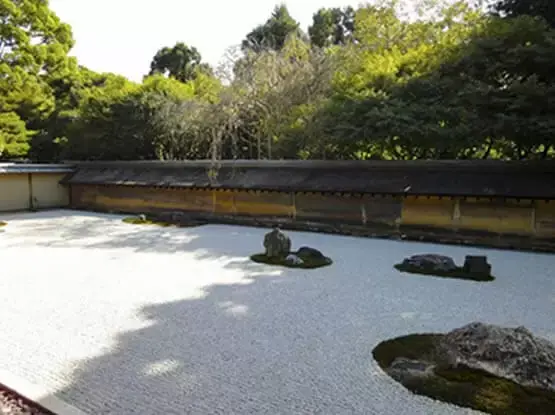
Ryoan-ji Temple
The Silver Pavilion, Ginkaku-ji
Another highly recommended Zen garden is Kyoto’sGinkaku-ji, or the Silver Pavilion, constructed in 1482 by the 8th Shogun, Ashikaga Yoshimasa, and based on his grandfather’s retirement villa,the Kinkaku-ji, or Golden Pavilion. Unlike the Golden Pavilion, which is covered in real gold, the Silver Pavilion is not, nor ever has been, covered in silver.
Entry is via a 50m walkway of raked sand enclosed by tall hedges, supposedly leading you away from the outside world and to purify you for the treat ahead. The entry ticket doubles as an amulet to protect your home and family, so keep it safe. The tranquility strikes you first. It is much less visited than its sister site, the Golden Pavilion, and thus the Zen like atmosphere is preserved. Of note is the Togu-do, a small, simple yet elegant, slightly raised wooden structure, built at the same time as the titular Silver Pavilion, and is also a National Treasure.
The elegant pavilion itself, the Kannon-den Ginkaku, sits amongst other similarly ancient temple buildings, beside a picturesque pond, bordered on the north by a meticulously maintained symbolic garden of raked, coarse, dry white sand, known as the "Sea of Silver Sand". A huge feature element, a large cone of sand known as the "Moon Viewing Stand " sits in front of the pavilion.
Beyond this sand garden, in stark contrast isthe Ginkaku-ji temple’s moss-covered garden, with rockeries, waterfalls, ponds with islands linked by bridges and paths leading to a small hill offering a panoramic view over the entire ancient complex.
Murin-an, A Masterpiece of Scenic Beauty
Yamagata Aritomo (1838-1922) was an important political statesman and military leader of Japan. He was born a lower-ranking samurai, fought in the Boshin War that ended Japan’s feudal era, became a field marshal, and was twice elected Prime Minister of Japan. He was also a talented garden designer, responsible for a number of masterpieces, including the villa, Murin-an Gardens of Kyoto.
The Murin-an gardens were created between 1894-96 and consist of the garden, the main house, a Western-style house, and a tearoom. The houses are also open to the public and are preserved just as Yamagata left them, providing a fine view of the gardens from the various rooms. The Western-styled house was the scene of the Murin-an Conference, where Yamagata, former Prime Minister Ito Hirobumi, Foreign Minister Komura Jutaro and Prime Minister Katsura Taro determined Japan’s East Asia policy, an important moment in Japan’s history.
Unlike most traditional Japan gardens that likened ponds to oceans and rocks to islands, Murin-an was formed with a naturalist view of gardens using a mountain village landscape joined to the Higashiyama mountains and a lively stream using Lake Biwa Canal water to produce a dynamic scene that changes with the seasons. Murin-an was designated a National Place of Scenic Beauty in 1951.
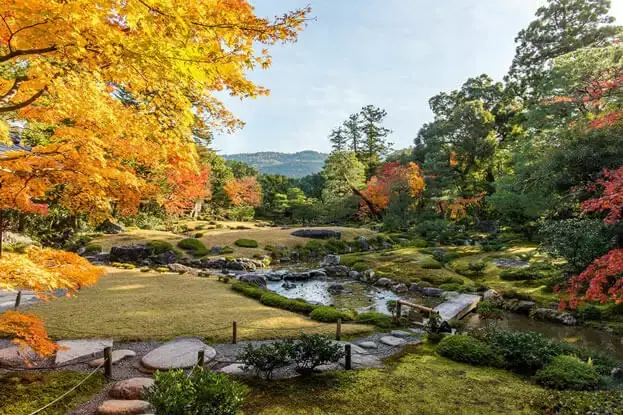
©UEYAKATO LANDSCAPE Co.LTD
Murin-an
Along The Way
Other truly stunning gardens include the Yokokan Gardens in Fukui City, Fukui Prefecture. Within walking distance of Fukui Station is a samurai garden and villa complex built on the outer moat of Fukui Castle by the ruling Matsudaira clan. Enjoy the simple luxury of the elegantly constructed villa, and the stunning views of the surrounding garden in any season.
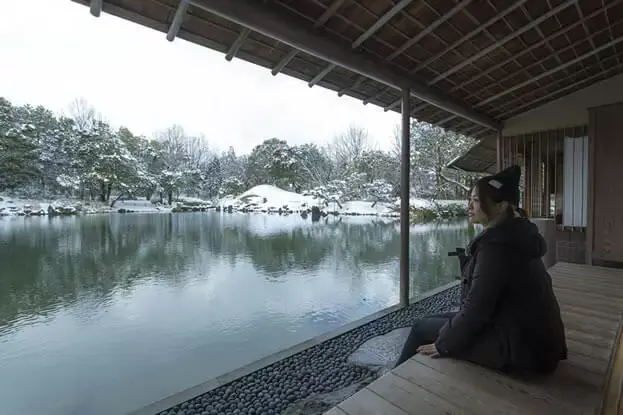
Yokokan-Gardens
The Daisen Park Japanese Garden in Sakai City, Osaka is situated adjacent to the World Heritage listed burial mounds of Emperor Nintoku. The traditionally landscaped gardens are said to symbolize the history of the Sakai region, particularly that of its early international trading port status.
An hour north of Kyoto, but still within its’ confines is probably one of Japan’s best kept secrets; the Ohara Sanzen-in temple and its many, varied gardens. In the middle of Sanzen-in’s beautiful moss garden is the Ojo Gokuraku-in, first built in 985, and rebuilt in 1143. The Kyakuden, main hall, and the Shinden Hall offer the best views of the Shuheki-en and Yusei-en gardens, and of the Ojo Gokuraku-in. Giant Cryptomeria and Japanese Cypress trees grow from the mossy grounds here, and tower over the ponds, waterfalls and exquisite garden elements. In one section, beside the Benten Pond, small stone statues of the Jizo god seem to be happily playing in the moss. The temple’s many thousands of hydrangea plants near the Kannon-do hall, and the stone gardens add to the variety of themes and tastes within this secluded spot. That this historical temple, and its stunning year-round scenery isn’t better known or appreciated is a travesty! The upside is, the history, the culture, and the beauty can be yours to enjoy in peace.
Shokado, Four Seasons in a Lunchbox
The compartmentalized bento lunch boxes available across Japan called Shokado are said to have been named after the medieval monk, Shokado Shojo. Shokado was a master of the way of tea, calligraphy, ink paining and of waka poetry.
The Shokado Garden and Art Museum in a quiet suburban Kyoto neighborhood was created by the monk, and like his distinct bento boxes separated into four compartments, the four distinct seasons are well displayed in this splendid garden. Shokado features 40 kinds of bamboo, nearly 300 camellia trees, plum trees, cherry trees, green and Japanese maple trees and has a number of classical tea ceremony houses creating some awe-inspiring scenes. The adjoining art museum is dedicated to the monk’s works, including calligraphy and brush paintings.
EXPO ’70 Commemorative Park
In 1970 Osaka hosted EXPO ’70,Asia’s first World Exposition, themed “Progress and Harmony for Mankind” it was an astronomical success relaunching Japan as an advanced futuristic technological leader on top of being the economic miracle nation.
EXPO ’70 hosted displays by 77 countries, and 32 Japanese companies, organizations and others making a total of 116 highly creative pavilions which entertained and amazed a record of approximately 64.2 million visitors over the six-month period from March 15, for 183 days until September 13, 1970. (This record held until the Shanghai EXPO in 2010!) It featured rocks brought back from the moon mobile phones, local area networking and even linear-motor-train technology.
It was futuristic, it was fascinating, it was fun, it was fabulous! And in the blink of an eye, it was over. The memories and the area remain however, as the site became the OsakaEXPO Commemorative Park, overlooked by the EXPO’s symbolicTower of the Sun, an around 70m high art installation created by the famed Taro Okamoto. Incidentally, the tower was retrofitted in 2018 to once again recreate the Osaka EXPO display and re-open to the public! (bookings required). The park is now divided into various sections, including sports and recreation facilities, the EXPO 70 Commemorative sports stadium, the Japan Folk Crafts Museum,the National Museum of Ethnology, and The EXPO ’70 Pavilion displaying Osaka Expo related documents, photos and memorabilia. A 300m long elevated tree-top walkway, Sorado, overlooks grassed areas, picturesque ponds and seasonal flowers.
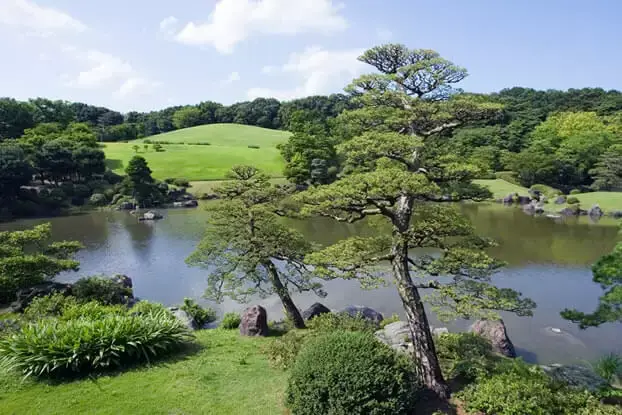
©Osaka Pref.
The EXPO’70 Commemorative Park, Japanese Garden
The 26-hectare traditional Japanese garden section was originally part of the Japanese Governments’ exhibit at EXPO ’70 and features the finest landscaping techniques, spanning four time periods. Here, 8th-11th century Heian Period styled gardens blend into the styles of the 12th-16th century Kamakura and Muromachi period gardens, which adjoin the Edo Period (17th-19th c.) and modern Japanese styled gardens. The effect is nothing short of fascinating and is a must-see spot for anyone with an interest in Japan’s samurai and temple gardens.
Japan’s Iconic Cherry Blossom, Kansai Top Spots
While visions of cherry blossom in Kyoto are considered de rigueur, there are many other Kansai locations that provide the scenery you seek.
Nara Park in Nara Prefecture is located close to many must see famous temples and shrines such asTodai-ji, home of the Great Buddha, andKofuku-ji Temple. Enjoy the atmosphere of this ancient area, and the beauty of the season.Nara Park is home to about 1,200 wild deer which interact with the visiting public. Particularly when there is food involved. If you’re planning a picnic, or a Japanese styled hanami, a cherry blossom viewing party, don’t worry about ants …worry about the friendly deer!
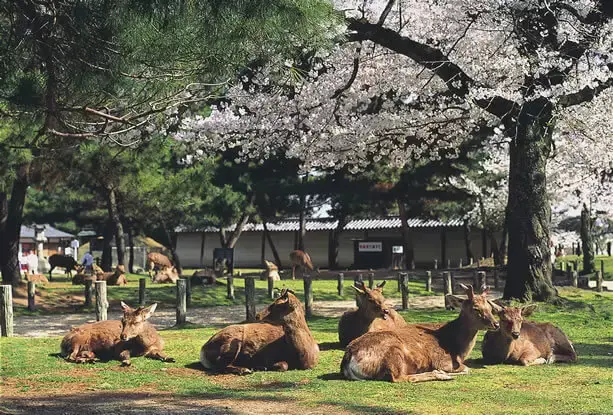
©Nara City Tourism Association
Nara Park
Jiko-in Temple also in Nara is said to be one of the top 3 gardens in Nara. Located in Yamato Koriyama, the Jiko-in was founded by the warlord Katagiri Sadamasa in 1663. Simple, serene, and striking. The views along the paths, through grand gates to the main samurai villa-like structure’s drawing room, from where the wide garden and the surrounding Yamato Plains can be best viewed, will leave a lasting impression.
One of the most appreciated of the cherry blossom types is known as theYoshino cherry. Mt. Yoshino in Nara Prefecture is said to be the home of the Yoshino variety, where over, 30,000 cherry blossom trees cover the mountainside. The area is also famous for its fall foliage hence drawing great crowds every half year.
Castle Gardens
The gardens ofHimeji Castle andNijo Castle, both of which are World Heritage listed sites, are noted for their traditional gardens, and for their spectacular cherry blossom.Nijo Castle’s splendid gardens have been enjoyed by the Imperial Family, the shogun and samurai elite for centuries. Take the time to see not just the historical buildings remaining from the feudal era, but also the surrounding gardens that simply enhance the elegant structures from the many vantage points.Osaka Castle Park is another fine cherry blossom viewing spot, and regularly draws thousands every spring to enjoy the short lived, but long remembered flowers. The grounds of most castle sites and ruins within the Kansai region are now covered in cherry trees, and so where there is a castle, there will be cherry blossom, and hundreds of thousands of admirers every spring.
Other Spots, Other Seasons
There are so many other attractive parks across the Kansai region with flowers all year round. Summer in Kansai brings sunflowers, andSunflower Hill Park in Ono City, Hyogo Prefecture sees over 380,000 spectacular sunflowers bloom. When the sunflowers wilt, they are replaced by 3.8 million cosmos flowers blooming in the fall.
Tottori Prefecture’s popularTottori Flower Corridor is one of the largest flower parks in Japan. Various flowers are on show all year round, including tulips, roses, and salvia. Large domed glasshouses ensure there are plenty of flowers whatever the season, with the added winter attraction of flower competitions and winter illuminations.Harvest Hill in Sakai City, Osaka, is a flower and fun filled agricultural park, with seasonal flowers and a range of activities to enjoy.
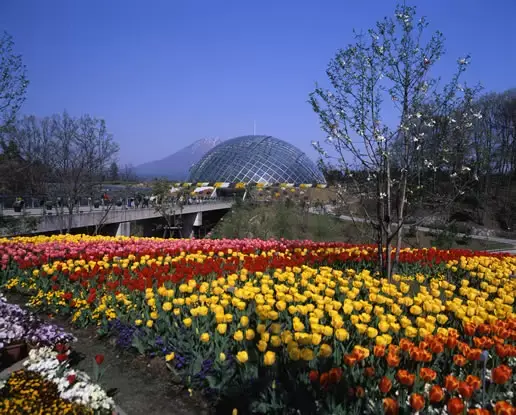
©Tottori Pref.
Tottori Flower Corridor
The Awaji Island National Government Akashi Kaikyo Park on Awaji Island in Hyogo Prefecture is a leisure garden by the sea, and the site of many garden, flower and landscaping exhibitions. The garden is designed to display seasonal flowers across the year: spring features great swarths of daffodils and tulips, summer sees sunflowers, autumn has cosmos, and winter provides Christmas roses to name but a few.
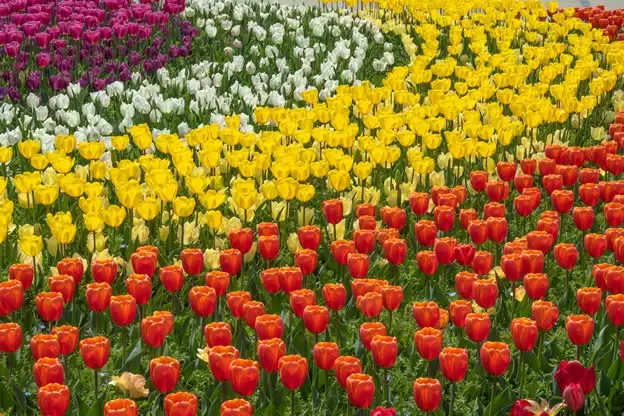
Awaji Island National Government Akashi Kaikyo Park
Enjoy the Four Seasons in Kansai Region’s Parks and Gardens
The iconic blossoms of spring, the lush greens of summer, The bright colors of autumn, The starkness of winter. No wonder the Japanese believe their country is unique in having four seasons.
Many of the Kansai region’s most prized gardens and fine parks were created to take advantage of these distinctive four seasons, so be assured, you will not only be visiting the best of Japan’s parks and gardens, but you’ll be experiencing the best of the seasons in Kansai.
Writer: Chris Glenn

Chris Glenn is an Australian born bilingual radio DJ, TV presenter, narrator, MC, copywriter, author, columnist, and Japanese historian, specializing in samurai castles, battles, armor and weapons. Based in Nagoya since 1993.
He is an inbound tourism advisor for national and local governments and is often called upon as a lecturer and speaker on Japanese history and culture, media and inbound tourism topics. Having written many websites articles, pamphlets, signs and explanations for local governments, DMOs, museums, tourist sites and businesses, he has a reputation for English writing that matches the needs and senses of foreigners visiting Japan.
His books include the English language “The Battle of Sekigahara” (Booklocker) the Japanese language “Australian Researcher’s Castles of Japan” (Takarajima) and Samurai Castle Bilingual Guide (Shogakukan). Chris is dedicated to promoting and preserving Japans’ long history, deep culture, traditions, arts and crafts.
Check also...
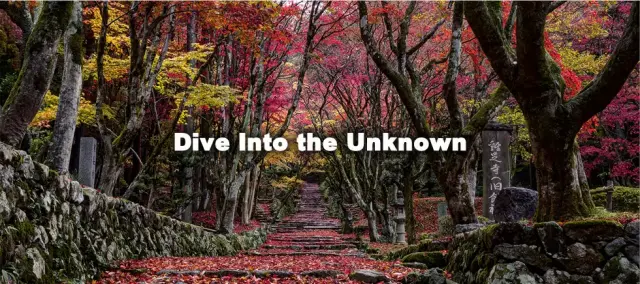
Historical Kansai, Cultural Kansai, Japan’s Treasure House
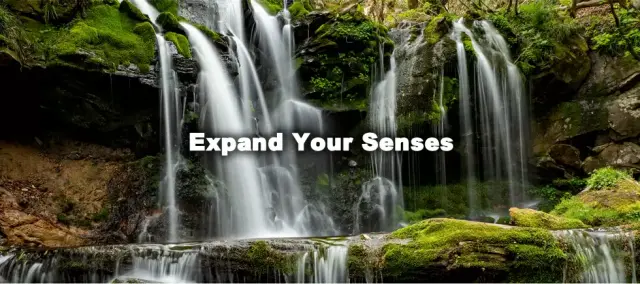
Natural Kansai, Adventures Beyond The Big Cities

Japan’s Kitchen, Must-Try Kansai Cuisine
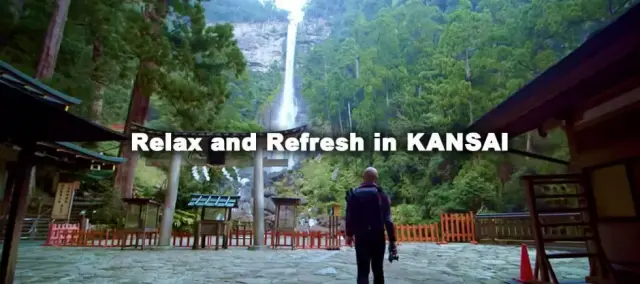
Relax and Refresh in KANSAI
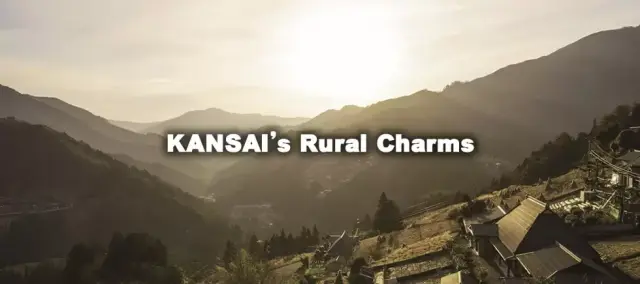
KANSAI’s Rural Charms
![Take a leisurely stroll in the retro and fashionable space [Kuroe, the town of Kishu lacquerware]](/kansaiguide/data/article/21000/20278/20250618_133123_770e1e88_w640.webp)
Take a leisurely stroll in the retro and fashionable space [Kuroe, the town of Kishu lacquerware]
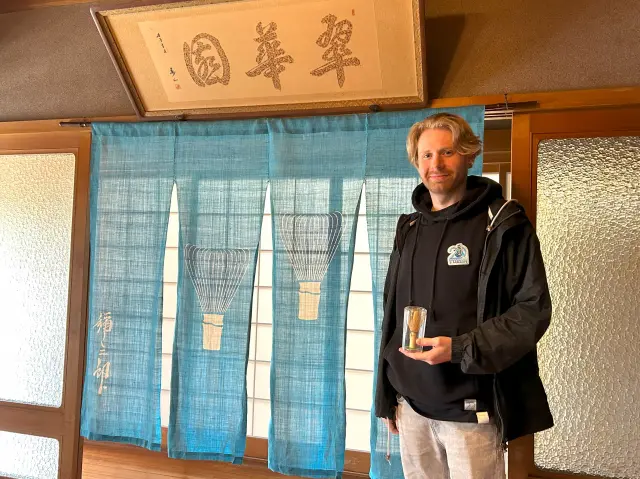
Timeless Culture: A Journey to See, Taste, and Experience the Depth of Traditional Industries in Osaka and Nara
